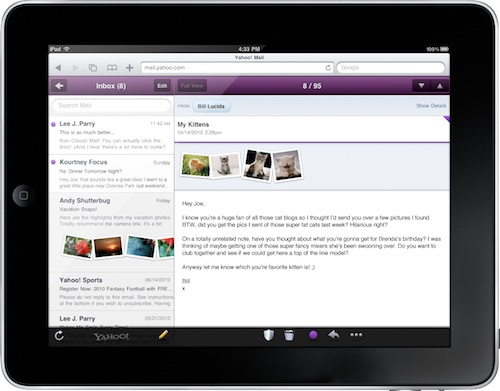
If you've used our recently launched HTML5 mobile Web mail for iPhone you'll feel right at home. We've kept all the things users love about our new mobile Web mail experience, while also optimizing for the gorgeous large screen of the iPad.
Among the new features are local caching for offline access, improvements to searching and organization, enhanced attachment handling, and a dual pane view similar to that employed by the native iPad email application. Google launched a similar HTML5-based interface for Gmail on the iPad in April.Video sharing site Vimeo also announced yesterday the launch of a new "Universal Player" to allow users of Apple's iOS devices to view embedded video content from Vimeo.
Since we rolled out the HTML5 player in January people have been clamoring for an embeddable version, especially for iPhones and iPads. Today we're taking a big leap forward for compatibility and updating our embed code. We call it the Universal Player.
The Universal Player is as easy to use as the old embed code, just a lot more compatible. Instead of being a direct link to a Flash player the new Universal Player can automatically detect what kind of device is viewing the video and choose the optimum player based on the device's capabilities. For example, it will serve mobile video to iPhones and Androids and HD to iPads and Desktops.
No comments:
Post a Comment